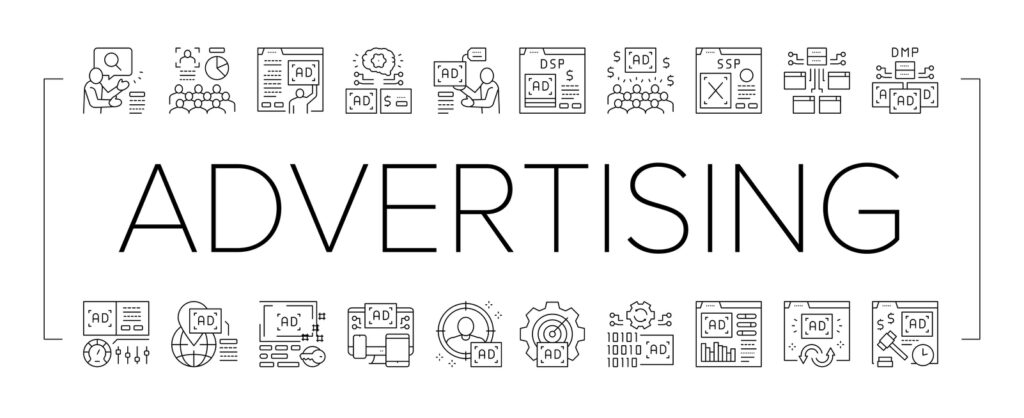What Is Display Advertising?
What Is Display Advertising?

Display advertising is a type of ad presented online that incorporates text, photos, and links to lead users to a website. The user clicks on your ad and will find more information about the product or service, ideally converting them to a paying customer. Display advertisements can come in many different shapes and sizes but usually are square or rectangle shapes to fit more efficiently within a typical website. The content can change to reflect the website the ad is placed on or for the person looking at it.
Instead of using a pull approach, such as when someone searches the internet for something specific, display advertising uses a push approach.
Today, consumers see a display advertisement either because it has been carefully placed with remarketing efforts or because the user has recently visited a site that has the creator or Google has targeted with the ad.
The History of Display Advertising
Display advertising started with one of the most memorable first banner ads in 1994. This banner was for AT&T asking, “Have you ever clicked your mouse right here? You will.” This single initial ad is what started the period of banner ads. The AT&T team didn’t want to create an atmosphere of sales, but instead, the team decided, “Let’s reward them for clicking on this thing brought to you by AT&T.”
After this, other companies started rushing into the display advertising business. In 1995, banner ads began to target specific users with different demographics. Before these efforts, there was a small amount of strategy or planning involved. The default was distributing unspecified ads to uncategorized web users and hoping the consumer was interested. This change led to what we know as targeted ad placement. From there, display advertising evolves quite a bit:
- ROI tracking tools started to get better in 1996
- Pop-up ads made their appearance in 1997
- Paid placement and pay-per-click begin in 1999-2002
- Online ads became exceptionally targeted in 2006
- Marketers discover the actual value in native ads from 2010-present
Types of Display Advertising Today

Display advertising has grown and evolved since the late 90s and has formed into several different groups. Display advertising is a general blanket term to describe any visual advertisement on a website. These ads can come in many forms but are typically banners, images, or texts.
These can be divided up and known as:
• Site placement advertising
This type of advertising is when an advertiser selects specific websites to place their advertisement. Suppose you want to cover a broader population by putting contextual and placement advertising together. In that case, you can choose a website you are interested in hosting your ad and let Google find the most relevant pages for your ad to sit.
• Contextual advertising
Contextual advertising is when you place ads on websites with related content based on specific criteria. The criteria include:
- Topic and keywords
- Location and language
- The theme of the website
- Browsing the history of the website guests
An example of contextual advertising could be placing an ad for tires on a car dealership’s website.
• Remarketing/Retargeting ads
Advertisers can place ads in front of users who have already visited your website. Cookies will track the visit and then put an advertisement on another website the user visits in hopes that they will reevaluate and revisit your website.
According to Accenture Interactive, “91% of consumers are more likely to shop with brands who recognize, remember, and provide relevant offers and recommendations”. This information means that the more successful the ads are at remarketing towards a consumer’s needs and wants, the more likely they will come back.
Using retargeting ads is a great way to keep your product or service current and on top of the minds of consumers who have previously shown their interest in your brand.
The Importance of Display Advertising in 2022

This year, display advertising is expected to grow and be an even more significant part of advertising strategy. Desktop display ads are expected to lower in performance, but the use of mobile devices is continuing to go up at an unexpected rate. Mobile usage will make up for the lack of desktop use and increase total web usage for the foreseeable future, accounting for over $440 billion. Investments in mobile advertising are now more critical than ever and will continue to be.
How Red Crow Can Help
 For advertisers looking to generate that initial interest in their product, display advertising is a great way to get in front of the most prospective customers at minimal costs. Red Crow Marketing has years of experience planning and executing display advertising campaigns for our clients.
For advertisers looking to generate that initial interest in their product, display advertising is a great way to get in front of the most prospective customers at minimal costs. Red Crow Marketing has years of experience planning and executing display advertising campaigns for our clients.
Interested in getting your company started with Display Advertising?
Contact Us today, and we will help every step of the way!

This Post Has 0 Comments